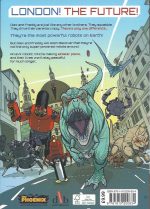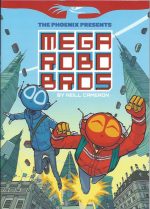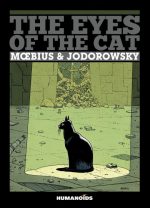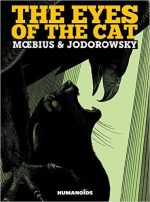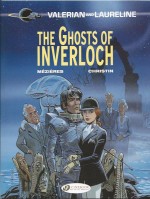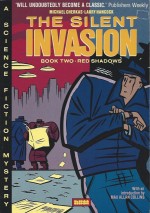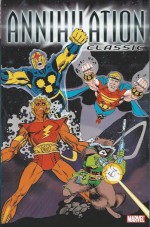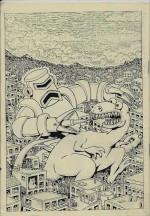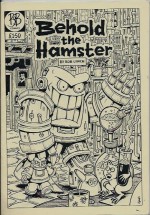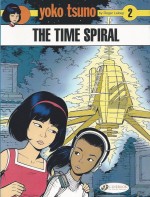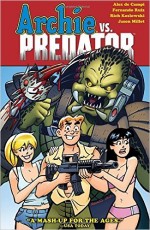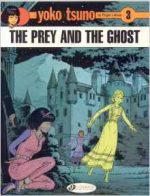
By Roger Leloup translated by Jerome Saincantin (Cinebook)
ISBN: 978-1-905460-56-4
Sublime scientific investigator Yoko Tsuno debuted in Spirou in September 1970 and is still going strong. As detailed by Roger Leloup, the astounding, all-action, excessively accessible exploits of the slim, slight Japanese techno-adventurer are amongst the most intoxicating, absorbing and broad-ranging comics thrillers ever created.
The phenomenal magnum opus is an expansively globe-girdling, space-&-time-spanning series devised by another monumentally talented Belgian maestro. Roger Leloup began his solo career after working as a studio assistant on Herge’s Adventures of Tintin. Compellingly told, superbly imaginative and – no matter how fantastic the premise of any individual yarn – always solidly grounded in hyper-realistic settings underpinned by authentic, unshakably believable technology and scientific principles, his illustrated epics were the forefront of a wave of strips changing the face of European comics in the mid-1970s.
This gentle revolution featured the rise of competent, clever and brave female protagonists, all taking their places as heroic ideals beside the boys and elevating Continental comics in the process. Happily, most of their exploits are as timelessly engaging and potently empowering now as they ever were, and none more so than the trials and tribulations of Yoko Tsuno.
Her very first outings – Hold-up en hi-fi, La belle et la bête and Cap 351 – were brief introductory vignettes before the superbly capable engineer and her valiant but less able male comrades Pol Paris and Vic Van Steen properly hit their stride with premier full-length saga Le trio de l’étrange which began in 1971 with Spirou‘s May 13th issue…
In the original European serialisations, Yoko’s exploits alternated between explosive escapades in exotic corners of our world and sinister deep-space sagas with the secretive, disaster-prone alien colonists from Vinea but, for the majority of the English translations thus far, extraterrestrial encounters have been generally sidelined in favour of epically intriguing Earthly exploits such as this sinister, spectrally-inspired crime caper…
There have been 27 European albums to date. This tale was first serialised in 1981 (in Spirou #2244-2264) and collected the following year as 12th volume La Proie et l’ombre. Due to the quirks of publishing it reached us Brits as Yoko’s third Cinebook outing: a suspenseful modern gothic thriller challenging the barnstorming boffin’s courage, resourcefulness and fundamental beliefs…
Yoko and Pol are driving through Scotland on a Highlands road as the afternoon lengthens into evening when they are forced into a ditch by a young woman throwing herself at their car. The dishevelled creature is being pursued by a pack of hounds and gang of men, but Yoko’s horror is momentarily quelled when the leader of the pursuers explains that poor Cecilia is mad…
The deranged waif begs the strangers to save her, but when her guardian Sir William – the local Laird – arrives, further answers emerge. The poor lass believes she is visited by her dead mother…
Yoko and Pol accept an invitation to stay at the castle, but stay behind to repair their vehicle before joining the party. As they change the tyre a stranger approaches, offering another side to the strange family history. An author, scientific ghosthunter and debunker, the anonymous newcomer relates how 15 years previously Cecilia’s mother Mary chose Sir Brian over another ardent suitor. The rejected swain was a self-proclaimed sorcerer named Mac Nab who prophesied the newlyweds would both die violently and that their daughter would perish before reaching her majority…
When Brian died in a strange accident, his brother William took the seat and married the grieving widow. Mary went mad when Cecilia was five and was killed in a riding accident.
In the intervening years William has tried everything to ensure the last part of the curse would never come to pass, but now at twenty, the daughter seems to have gone the way of her tragic mother. Moreover, reports abound that the sorcerer is still alive, hiding on the estate to ensure his prediction’s completion. When Yoko and Tsuno finally reach the castle they are bristling with theories and suspicions, but steadfastly refuse to give any credence to supernatural forces…
As the household convenes for supper, the visitors are astounded to find Cecilia completely recovered: almost a completely different woman, whose only problems are a short temper and tendency to forget things…
The meal is strained and fractious and ends early. Strangely tired and oddly clumsy, Yoko retires to bed but her sleep is disturbed after a veiled woman in black lures her out into the castle halls before disappearing. All that is left of her is an empty gown.
Baffled Yoko heads back upstairs and lets herself into Cecilia’s locked room. The strange girl is now eager to see her; quitting her painting to examine the dress which she claims belonged to her mother. As they talk, the women glance out of a window and Yoko sees a ghostly figure on a far parapet. It looks exactly like the portrait of deceased, tragic Mary…
Giving chase – and carefully noting that every door seems to open for her – Yoko races across the castle grounds in rapid pursuit with Cecilia trying to keep up. The chase ends in the ruins of an abbey where the technologist passes right through the apparition and realises her suspicions have been confirmed.
Even though she is unaware that sinister eyes are watching her, Yoko is pretty convinced that she knows what’s going on now…
The next day she deftly continues her investigations and makes her preparations to expose a criminal conspiracy years in the making, but has she made the foolish mistake of underestimating her opponents and incorrectly deducing who’s actually behind the murderous scheme?
Complex, devious and subtly suspenseful, this fresh take on an old plot bristles with clever clues for the attentive reader to pick-up on and delivers a splendidly crafty conclusion, once more affirming Yoko Tsuno as top flight troubleshooter, at home in all manner of scenarios and easily able to hold her own against the likes of James Bond, Modesty Blaise, Tintin or other genre-busting super-stars: as triumphantly capable facing swindlers and murderers as aliens, mad scientists or unchecked forces of nature…
As always the most effective asset in these breathtaking tales is the astonishingly authentic and staggeringly detailed draughtsmanship and storytelling, which superbly benefits from Leloup’s diligent research and meticulous attention to detail.
The Prey and the Ghost is a brilliant mystery; which will appeal to any devotee of Holmes, Marple, Castle or Scooby-Doo.
Original edition © Dupuis, 1982 by Roger Leloup. All rights reserved. English translation 2008 © Cinebook Ltd.

